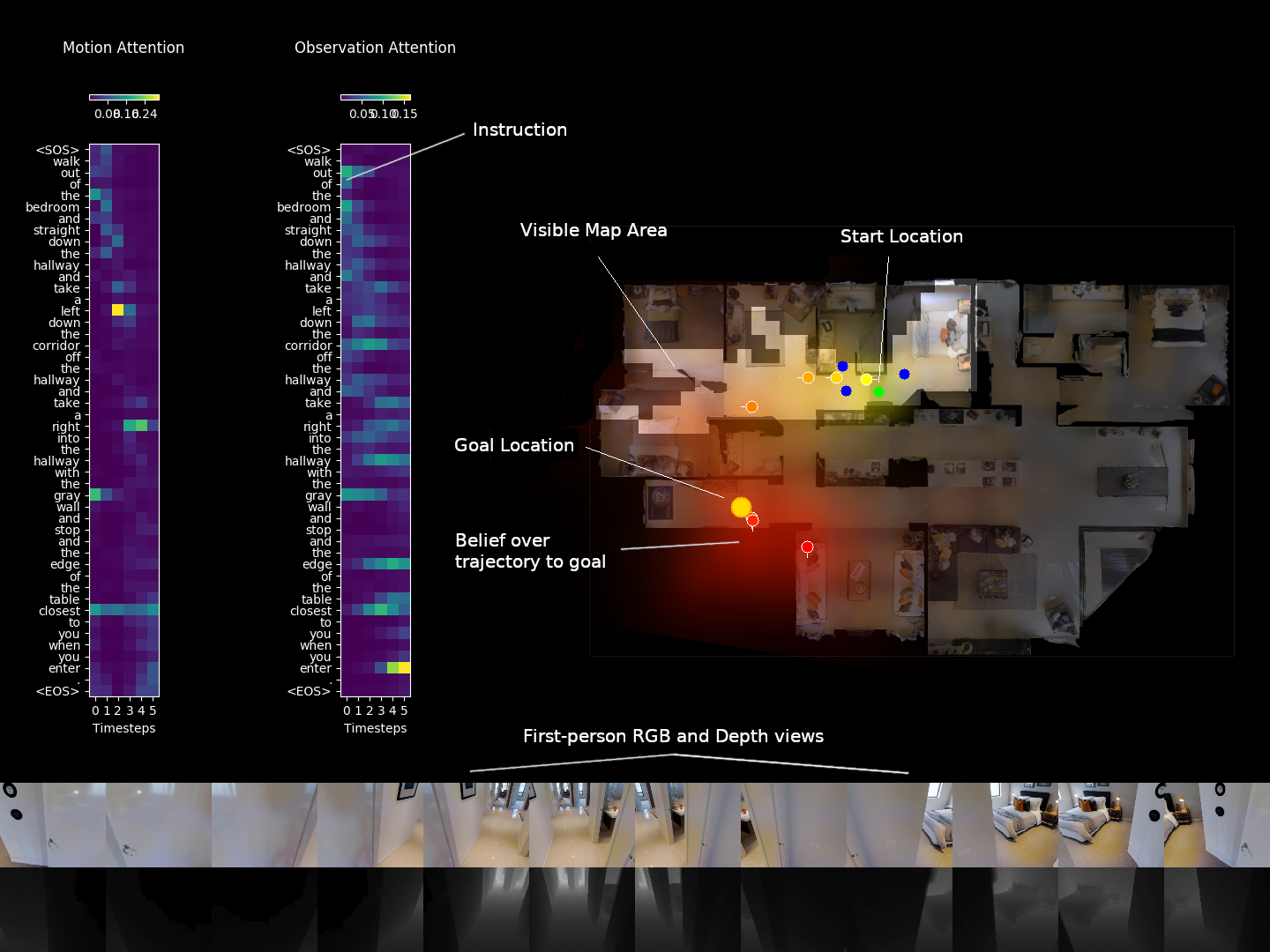Chasing Ghosts: Instruction Following as Bayesian State Tracking
A visually-grounded navigation instruction can be interpreted as a sequence of expected observations and actions an agent following the correct trajectory would encounter and perform. Based on this intuition, we formulate the problem of finding the goal location in Vision-and-Language Navigation (VLN) within the framework of Bayesian state tracking - learning observation and motion models conditioned on these expectable events. Together with a mapper that constructs a semantic spatial map on-the-fly during navigation, we formulate an end-to-end differentiable Bayes filter and train it to identify the goal by predicting the most likely trajectory through the map according to the instructions. The resulting navigation policy constitutes a new approach to instruction following that explicitly models a probability distribution over states, encoding strong geometric and algorithmic priors while enabling greater explainability. Our experiments show that our approach outperforms a strong LingUNet baseline when predicting the goal location on the map. On the full VLN task, i.e. navigating to the goal location, our approach achieves promising results with less reliance on navigation constraints.
PDF Abstract NeurIPS 2019 PDF NeurIPS 2019 Abstract


 Matterport3D
Matterport3D
 R2R
R2R